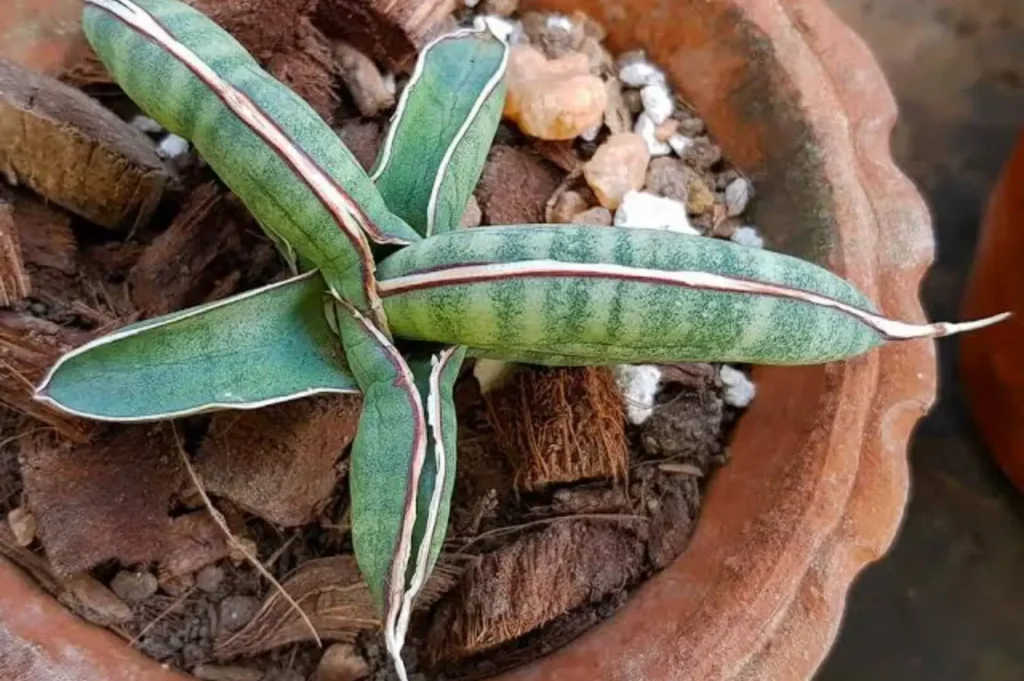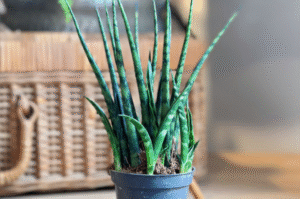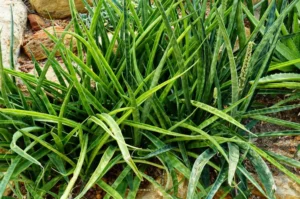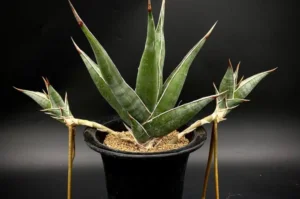Sansevieria eilensis is one of the rarest and most visually striking varieties in the snake plant family. With its deep blue-green cylindrical leaves, textured ridges, and compact rosette formation, it stands out as a must-have for collectors and houseplant enthusiasts. Native to the arid regions of Somalia, Sansevieria eilensis is a slow-growing, hardy, and uniquely beautiful plant, but it requires specific care to thrive fully.
In this detailed care guide, we’ll walk you through everything you need to know to successfully plant, grow, and care for Sansevieria eilensis at home.
What Makes Sansevieria eilensis Special?
Before diving into the planting and care routine, it’s important to understand why this particular snake plant variety is so coveted:
- Rare and exotic: Native only to a specific region of Somalia.
- Unique leaf structure: Thick, tubular leaves with longitudinal grooves and rolled edges.
- Compact size: Ideal for small indoor spaces and minimalist decor.
- Drought-tolerant: Excellent for low-maintenance households.
- Air-purifying: Like other snake plants, it helps filter indoor air.
Ideal Conditions for Sansevieria eilensis
Understanding its native environment is key to recreating ideal conditions at home.
| Condition | Preferred Setting |
| Light | Bright, indirect sunlight or filtered light |
| Temperature | 65°F – 85°F (18°C – 29°C); avoid frost |
| Humidity | Low to moderate |
| Soil | Well-draining, gritty mix |
| Watering | Very infrequent; allow the soil to dry completely |
How to Plant Sansevieria eilensis
Planting Sansevieria eilensis correctly from the start ensures healthy root development and long-term growth.
1. Choose the Right Pot
Select a terracotta or ceramic pot with a drainage hole. Terracotta allows excess moisture to evaporate, reducing the risk of root rot.
Pro Tip: Choose a shallow and wide pot, as Sansevieria eilensis grows more horizontally than vertically.
2. Use the Right Soil Mix
The key to success is drainage. Use a cactus or succulent soil mix, or create your own by blending:
- 50% cactus mix
- 25% perlite or pumice
- 25% coarse sand or crushed granite
3. Planting Steps
- Place a layer of gravel or pumice at the bottom for extra drainage.
- Fill halfway with your soil mix.
- Gently position the root system and fill around it with soil.
- Avoid burying the base of the leaves.
- Do not water immediately; wait 2–3 days to let the roots adjust.
Growing Sansevieria eilensis: Care Routine
Unlike fast-growing houseplants, Sansevieria eilensis is a slow mover. But with patience and proper care, it will reward you with strong growth and resilient foliage.
1. Watering Schedule
This is where most beginners make mistakes.
- Spring–Summer: Water once every 3–4 weeks.
- Fall–Winter: Water once every 6–8 weeks or less.
- Signs of Overwatering: Mushy leaves, black spots, or root rot.
- Signs of Underwatering: Shriveling or curling leaves.
Rule of Thumb: When in doubt, don’t water. Dry soil is safer than wet soil for this species.
2. Lighting Needs
Place your plant in bright, indirect sunlight. A south-facing window with a sheer curtain is ideal. While it can survive in low light, it will become pale and stop growing.
- Avoid full direct sun in hot climates, as it can scorch the leaves.
- Rotate the pot monthly to encourage symmetrical growth.
3. Temperature and Humidity
- Keep your Sansevieria eilensis in a stable room temperature.
- Protect from cold drafts or temperatures below 50°F (10°C).
- This plant does well in low humidity, making it perfect for dry indoor environments.
Fertilizing Tips
Though Sansevieria eilensis is not a heavy feeder, occasional feeding will enhance its color and growth rate.
- Use a diluted succulent or cactus fertilizer (half strength).
- Apply only during the growing season (spring to early fall).
- Avoid fertilizing in winter.
Pruning and Maintenance
This plant requires minimal pruning.
- Remove dry or damaged leaves by cutting them at the base.
- Clean the leaves gently with a dry cloth to remove dust.
Important: Always sterilize your cutting tools before pruning.
Repotting: When and How
Because of its slow growth, Sansevieria eilensis only needs repotting every 3–4 years, or when roots outgrow the pot.
Signs It’s Time to Repot:
- Roots are growing out of the drainage hole.
- Soil is compacted or not draining well.
- The plant is top-heavy and tipping over.
Steps:
- Gently remove the plant.
- Shake off excess soil and check for root rot.
- Place in a slightly larger pot with fresh soil mix.
- Do not water for a few days after repotting.
Propagation Guide
Although not fast to propagate, it can be done successfully with patience.
1. Leaf Cuttings
- Use a clean, sharp knife to cut a healthy leaf into 2–3 inch segments.
- Let the cuttings callous for 3–5 days.
- Plant upright in dry cactus mix and mist sparingly.
- Be prepared to wait several months for roots and pups to form.
2. Offsets
Occasionally, the plant will produce small pups or offsets.
- Gently separate the offset from the mother plant during repotting.
- Allow the offset to dry for a day before planting.
- Use the same gritty soil mix and watering schedule.
Common Problems & Solutions
| Problem | Cause | Solution |
| Mushy leaves | Overwatering | Let the soil dry completely; repot if root rot is present |
| Leaf curling | Underwatering or cold drafts | Water moderately and ensure consistent warmth |
| Pale leaves | Lack of sunlight | Move to a brighter location |
| Slow growth | Natural or poor soil | Fertilize lightly during the growing season |
Is Sansevieria eilensis Right for You?
This plant is perfect for:
Busy individuals who want a low-maintenance, drought-tolerant plant
Indoor gardeners looking to add a rare and sculptural piece to their collection
Collectors of unique Sansevieria species
Homes with low humidity and good natural light
But it may not be ideal for:
Impatient gardeners looking for fast growth
Low-light environments with no natural sunlight
People who tend to overwater their plants
Final Thoughts
Sansevieria eilensis may not be the flashiest or fastest-growing houseplant, but it brings a quiet elegance and resilience to any indoor garden. With the right conditions (minimal watering, gritty soil, and bright indirect light), you can enjoy its stunning architecture for years to come.
If you’re looking for a rare snake plant that combines uniqueness with durability, this species is well worth the investment.






